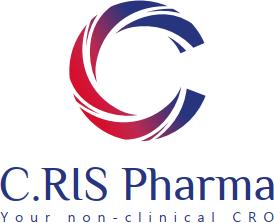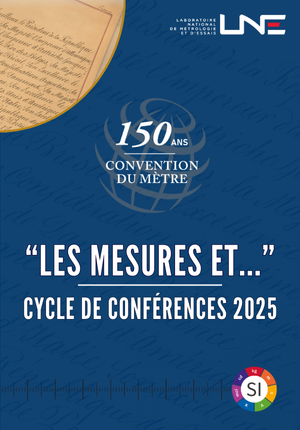Le rôle de la double couche électrique dans la sélectivité ionique des membranes, application à l'extraction du lithium // Understanding the role of the electric double layer in membrane ionic selectivity, application to lithium extraction
|
ABG-131435
ADUM-65495 |
Thesis topic | |
| 2025-04-25 |
Université de Montpellier
Montpellier - France
Le rôle de la double couche électrique dans la sélectivité ionique des membranes, application à l'extraction du lithium // Understanding the role of the electric double layer in membrane ionic selectivity, application to lithium extraction
simulation moléculaire, sélectivité membranaire, physique statistique, expérience de séparation ionique
molecular simulation, membrane selectvity , statistical physics, separtation experiments
molecular simulation, membrane selectvity , statistical physics, separtation experiments
Topic description
La demande mondiale de lithium métal augmente en raison de l'électrification des modes de transport [1]. L'extraction du lithium peut être faite en solution aqueuse. La méthode classique consiste en une étape de évaporation suivie d'une étape purification chimique [2]. Toutefois, ce processus est néfaste pour l'environnement. Une autre approche consiste à extraire directement le lithium à l'aide de membranes (conductrices d'électrons ou non) en utilisant un effet de tamisage des ions et une polarisation électrique. Une telle approche a été récemment démontrée expérimentalement en utilisant des électrodes de piles au lithium conventionnelles [3]. Il est possible d'améliorer ce procédé en contrôlant la sélectivité de la membrane afin d'augmenter le flux ionique. Il s'agit dans la cadre de cette thèse d'obtenir une compréhension fondamentale des processus moléculaires qui se déroulent à l'interface membrane/électrolyte. Par exemple, des travaux récents ont montré qu'on pouvait calculer les barrières d'énergie libre de passage des ions à travers une membrane bidimensionnelle afin d'étudier la sélectivité ionique [4]. Cependant, l'approximation classique de type 'champ moyen' pour le traitement de la double couche électrique s'avère problématique [5] en raison de l'absence des forces de corrélation ionique [6]. Une autre complication qui n'a pas été prise en compte dans les travaux antérieurs [3,4] est la nature variable de la membrane en fonction des forces thermodynamiques environnantes telles que le pH et le champ électrique. Les membranes en céramique ou en carbone ont, dans la plupart des cas, des textures défectueuses qui permettent la localistion de charges à proximité de leur surface sous l'effet de la tension appliquée [6]. L'ambition scientifique de ce travail est le développement d'un cadre général pour prédire la sélectivité des membranes en fonction des conditions thermodynamiques. Dans ce projet, nous visons à construire un cadre pour prédire la sélectivité des ions à travers les membranes poreuses en céramique et en carbone. Nous prévoyons de tenir compte de la redistribution des charges dans l'électrolyte et le solide grâce à des potentiels inter-atomiques réactifs dont il conviendra établir la robustesse. L'objectif du travail in fine, est de développer une approche analytique de type modèle primitif reflétant les conditions interfaciales/poreuses, électrolytiques informées par les simulations atomistique. Ces conditions prendront en compte la discontinuité des bandes électroniques à l'interface [9] et la discontinuité diélectrique interfaciale [10]. En parallèle, les résultats des simulations seront étayés ou infirmés par des mesures électrochimiques expérimentales réalisées au laboratoire. Diverses techniques de calcul seront employées pour échantillonner les détails atomistiques des côtés solide et liquide, depuis la dynamique moléculaire classique et les approches de Monte Carlo jusqu'aux techniques de méta-dynamique [11].
------------------------------------------------------------------------------------------------------------------------------------------------------------------------
------------------------------------------------------------------------------------------------------------------------------------------------------------------------
There is an increasing global demand for lithium metal driven by the continuous transition to electric vehicles [1]. A viable source of extracting lithium is from aqueous solutions. The classical method to achieve this is via evaporation followed by chemical purification [2]. However, this process is time consuming, and environmentally adverse. An alternative approach is to directly extract lithium utilizing (electron-conductive or not) membranes using an ion sieving effect and an electrical polarization. Such an approach has been recently experimentally demonstrated utilizing conventional lithium batteries electrodes [3]. There is a room to improve and better control the selectivity of the membrane and enhance the ionic flux provided that we have a fundamental understating of the atomistic processes that takes place at the membrane/electrolyte interface. Recent computational work attempted to compute the activation barriers of ion-sieving across a two-dimensional membrane to address ion selectivity [4].
While this was a major step forward, the approach presented in this recent work relies on a mean field approximation of the electric double layer. Such approximations have proven consistently to be problematic in their predictions [5] due to missing key interactions such as the ionic correlation forces [6]. Another complication which was not considered in prior work [3,4] is the varying nature of the membrane as a function of surrounding thermodynamic forces such as the pH and the electric field. Ceramic or carbon membranes have in most cases, defective textures that allow developing charged zones at the vicinity of their surface due to the applied voltage analogous to the electric double layer in the aqueous solution [6].
The scientific outcome of this work will be developing a general frame to predict the selectivity of membranes as a function of thermodynamic conditions. In this project, we aim to construct a framework for predicting ion selectivity sieving through porous ceramic and carbon membranes. Herein, we adopt porous silica (vycor, MCM41…) and activated as model systems. We plan to account for the charge redistribution in both the liquid and solid sides. These will be carried out with in the frame of reactive interatomic potentials for both the solid and the electrolyte phases. Ultimately, the aim of the work is to develop an analytical primitive model approach reflecting the interfacial/pore, electrolyte conditions informed by atomistic. These conditions will take into account the discontinuity of electronic bands at the interface [9] and dielectric interfacial discontinuity [10]. In parallel, simulation results will be backed-up or infirmed with experimental electrochemical measurements realized in the laboratory. Various computational techniques will be employed to sample the atomistic details in the solid and liquid sides ranging from classical molecular dynamics and Monte Carlo approaches up to meta-dynamics [11].
------------------------------------------------------------------------------------------------------------------------------------------------------------------------
------------------------------------------------------------------------------------------------------------------------------------------------------------------------
Début de la thèse : 01/10/2025
------------------------------------------------------------------------------------------------------------------------------------------------------------------------
------------------------------------------------------------------------------------------------------------------------------------------------------------------------
There is an increasing global demand for lithium metal driven by the continuous transition to electric vehicles [1]. A viable source of extracting lithium is from aqueous solutions. The classical method to achieve this is via evaporation followed by chemical purification [2]. However, this process is time consuming, and environmentally adverse. An alternative approach is to directly extract lithium utilizing (electron-conductive or not) membranes using an ion sieving effect and an electrical polarization. Such an approach has been recently experimentally demonstrated utilizing conventional lithium batteries electrodes [3]. There is a room to improve and better control the selectivity of the membrane and enhance the ionic flux provided that we have a fundamental understating of the atomistic processes that takes place at the membrane/electrolyte interface. Recent computational work attempted to compute the activation barriers of ion-sieving across a two-dimensional membrane to address ion selectivity [4].
While this was a major step forward, the approach presented in this recent work relies on a mean field approximation of the electric double layer. Such approximations have proven consistently to be problematic in their predictions [5] due to missing key interactions such as the ionic correlation forces [6]. Another complication which was not considered in prior work [3,4] is the varying nature of the membrane as a function of surrounding thermodynamic forces such as the pH and the electric field. Ceramic or carbon membranes have in most cases, defective textures that allow developing charged zones at the vicinity of their surface due to the applied voltage analogous to the electric double layer in the aqueous solution [6].
The scientific outcome of this work will be developing a general frame to predict the selectivity of membranes as a function of thermodynamic conditions. In this project, we aim to construct a framework for predicting ion selectivity sieving through porous ceramic and carbon membranes. Herein, we adopt porous silica (vycor, MCM41…) and activated as model systems. We plan to account for the charge redistribution in both the liquid and solid sides. These will be carried out with in the frame of reactive interatomic potentials for both the solid and the electrolyte phases. Ultimately, the aim of the work is to develop an analytical primitive model approach reflecting the interfacial/pore, electrolyte conditions informed by atomistic. These conditions will take into account the discontinuity of electronic bands at the interface [9] and dielectric interfacial discontinuity [10]. In parallel, simulation results will be backed-up or infirmed with experimental electrochemical measurements realized in the laboratory. Various computational techniques will be employed to sample the atomistic details in the solid and liquid sides ranging from classical molecular dynamics and Monte Carlo approaches up to meta-dynamics [11].
------------------------------------------------------------------------------------------------------------------------------------------------------------------------
------------------------------------------------------------------------------------------------------------------------------------------------------------------------
Début de la thèse : 01/10/2025
Funding category
Funding further details
Enseignement supérieur
Presentation of host institution and host laboratory
Université de Montpellier
Institution awarding doctoral degree
Université de Montpellier
Graduate school
459 Sciences Chimiques Balard
Candidate's profile
Le candidat ou la candidate retenu.e devra avoir une solide formation en physico-chimie aux interfaces. Une base solide en physique statistique associée à des connaissances de méthodes de simulation sera décisive. L'aptitude à coder (Python, C...) sera un avantage. L'environement au laboratoire et les collaborations internationales de l'équipe encadrante nécessitera un bonne pratique de l'anglais.
The successful candidate will have a solid background in physical chemistry at interfaces. A solid grounding in statistical physics combined with knowledge of simulation methods will be decisive. Aptitude for coding (Python, C...) will be an advantage. The laboratory environment and the team's international collaborations will require a good command of English.
The successful candidate will have a solid background in physical chemistry at interfaces. A solid grounding in statistical physics combined with knowledge of simulation methods will be decisive. Aptitude for coding (Python, C...) will be an advantage. The laboratory environment and the team's international collaborations will require a good command of English.
2025-10-01
Apply
Close
Vous avez déjà un compte ?
Nouvel utilisateur ?
More information about ABG?
Get ABG’s monthly newsletters including news, job offers, grants & fellowships and a selection of relevant events…
Discover our members
 Institut Sup'biotech de Paris
Institut Sup'biotech de Paris  Nokia Bell Labs France
Nokia Bell Labs France  ONERA - The French Aerospace Lab
ONERA - The French Aerospace Lab  Aérocentre, Pôle d'excellence régional
Aérocentre, Pôle d'excellence régional  SUEZ
SUEZ 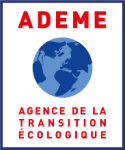 ADEME
ADEME  ASNR - Autorité de sûreté nucléaire et de radioprotection - Siège
ASNR - Autorité de sûreté nucléaire et de radioprotection - Siège  TotalEnergies
TotalEnergies  Laboratoire National de Métrologie et d'Essais - LNE
Laboratoire National de Métrologie et d'Essais - LNE  Tecknowmetrix
Tecknowmetrix  CESI
CESI  Généthon
Généthon  MabDesign
MabDesign  MabDesign
MabDesign  CASDEN
CASDEN 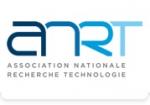 ANRT
ANRT 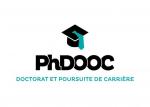 PhDOOC
PhDOOC  Groupe AFNOR - Association française de normalisation
Groupe AFNOR - Association française de normalisation  Ifremer
Ifremer


